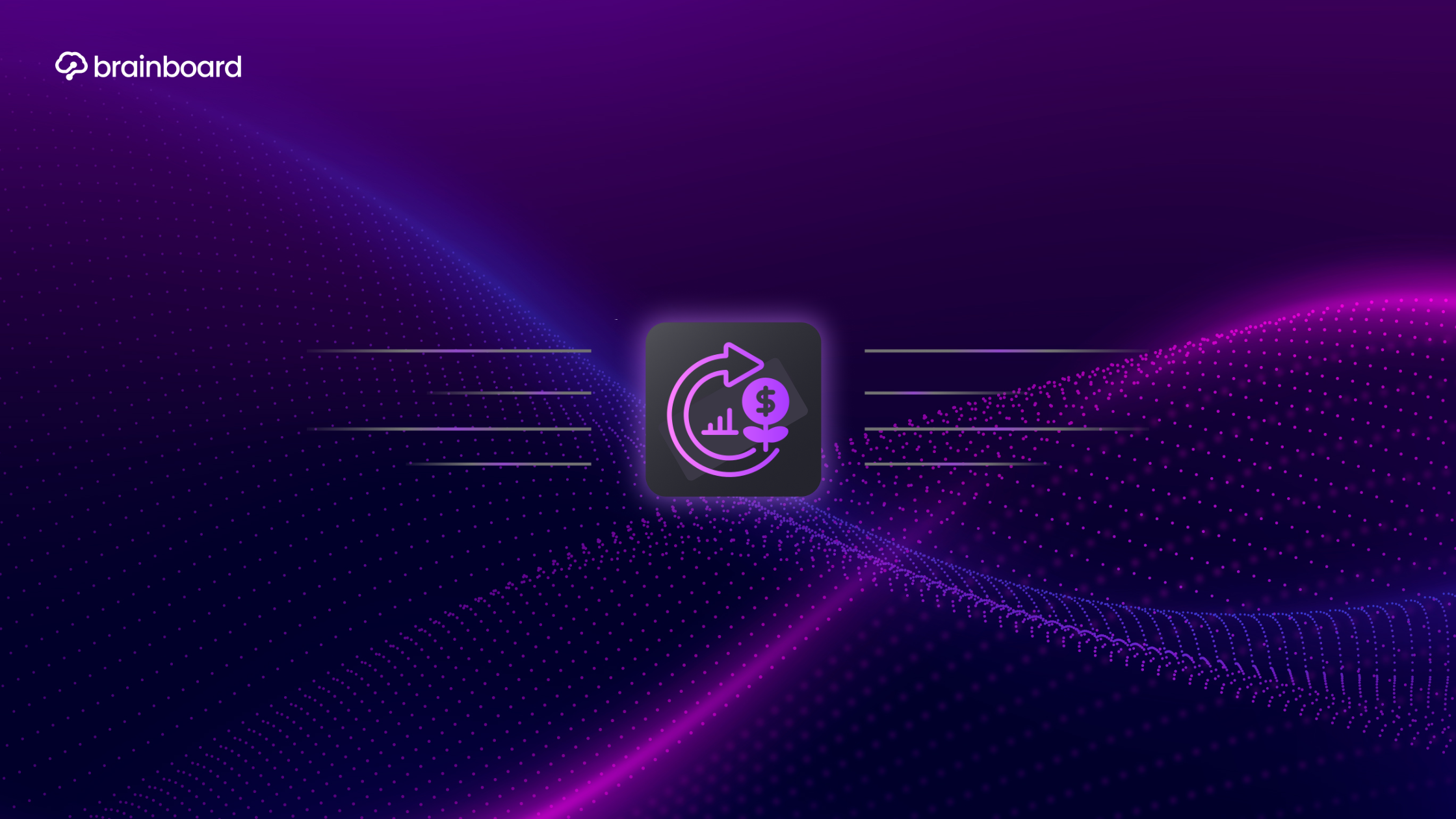First things first
DevOps and cloud infrastructure management tooling/practices evolve every day, and teams are constantly searching for tools to either increase velocity, remove bottlenecks and/or optimize for maintenance and operation. That’s where Brainboard enters the picture, as a game changer for teams and organizations that want to control from end-to-end how the infrastructure is design, reviewed, deployed and managed.
The first question managers ask when they are about to take a decision to adopt Brainboard is: What is the value of the product? In terms of:
- Man-hours/days saved
- Velocity increased (and measured)
- Costs saved
- Also, what is the short and long term benefit for the entire organization?
To answer these questions accurately, we’ll breakdown costs and benefit and provide detailed information to help you take a better decision when you are adopting Brainboard.
What to measure?
To better understand what to measure, we first need to understand what are the areas of cloud infrastructure management and what are the questions for which we need answers.
You are mainly fighting against 3 categories:
1. Do it yourself vs automation
The main question here is: What is the cost of building the automation yourself versus using an new/advanced technology like Brainboard?
With some underlying questions, like:
- What is the cost of the maintenance once the automation is build in-house?
- Who will be owning which part?
- How security is involved in the whole process?
- How knowledge transfer will happen?
2. No tooling vs tooling
What the cost of not using automation, or not doing IaC vs using the right tooling?
This is an important question for teams wondering whether they keep building and managing the cloud infrastructure the same way as today: going through the console of the cloud providers and building it manually, or leverage automation and best practices.
The answer to this question is not about productivity only, but also about:
- Security: How you ensure the business continuity in case of a disaster? What is your DR strategy in terms of RTO and RPO.
- Business impact: What is your capacity and velocity to (re)deploy new infrastructure from scratch when it is urgently needed?
3. Keep using different tools vs consolidating all in one platform
This is the case you are already using different tools or automation that is doing part of the job but without and end-to-end management.
Like you have a CI/CD tool but you still design your infrastructure by team A, handover to team B to write the Terraform/OpenTofu code, ask team B (security for example) to review and then deploy with the CI/CD tool.
Breakdown of the value
For all the questions raised above, we’ll explain what is the cost and how Brainboard can help by either saving costs, and time or removing bottlenecks.
To do so, and to be able to analyze the value with precision we breakdown the workloads into 2 parts:
The data below is built on the following assumptions, please adjust to your standards:
- Average DevOps/Cloud eng Salary in the US: $148,000/year
- Weekly Working Hours: 40
- Annual Working Hours: 2000
- Hourly wage: $74 (for an intermediate engineer)
- You need to move to IaC 1000 resources (independently of the cloud provider)
1. Brown field
This the existing infrastructure that has been created manually through the cloud providers’ portal (ClickOps) for which you don’t have a Terraform/OpenTofu code and you need to move it to IaC and keep it under control.
Let’s take as a baseline, importing 1000 cloud resources and generate the Terraform code for it:
- One engineer will be working on this task
- The actions to be done:
- For every resource, go the portal, open the configuration of the resource to get its configuration
- Write the Terraform block for it (either manually or with automation)
- Run a Terraform import to create or add it to the tfstate
- Double check with Terraform plan to make sure it is correctly imported
- If there is an issue, spend an unknown number of minutes or hours to fix it.
- Once done, document it by creating a diagram of the architecture
- It will take ~100 hours to complete the 1k resources
- Hiring an MSP will add 20 or 25% to the cost of one engineer
- Hiring a freelance will add 15% to the cost of one engineer
Based on that, he is the cost based on the method you chose:
| DIY (Do It Yourself) | Hire an MSP | Hire a freelance | Brainboard |
|---|---|---|---|
| $7,400 (100h x $74) | $9,2500 ($7,400 x 25%) | $8,510 ($7,400 x 15%) | $990 |
Using Brainboard saves you ~80% of the cost of any other solution you chose. Thanks to automation!
2. Green field
It includes any new workload to create and manage, where you will be using automation, best practices and building future-proof process.
In this area, Brainboard helps you on the following tasks/workflows:
2.1. Creating the infrastructure from scratch
Brainboard helps you with the following:
- It reduces the learning curve for non-technical people
- It generates the code from the diagram, so you don’t repeat yourself
- No CI/CD needed to get a feedback loop. Brainboard has a native one that takes you literally 10s to setup
- All stakeholders work collaboratively to review and/or approve any architecture. They all share the same view (diagram and code)
- Your custom modules are visible to everyone to build with natively. No back and fourth to the documentation, asking questions or test-and-fail until it works.
Using Brainboard reduces the time to create the infrastructure by 70%. Thanks again to automation!
2.2 Managing the cloud infrastructure
This is the day 2 of the infrastructure, where you need:
- To understand the impact of the change before introducing it
- Make it easy for every one to understand the infrastructure and contribute
- Have the right guardrails to gate deployment to production
- Manage multiple environments
In this area, Brainboard helps you avoid unnecessary work as you DO NOT:
- Run between different tools
- Update the diagram with the change (tool A)
- Implement the Terraform code for it (tool B)
- Push to git and wait for the CI to give you a feedback about it (tool C)
- Review it and/or approve it (tool D)
Brainboard reduces the time to manage the infrastructure by 90%.
2.3 Creating a self-service portal
If you have to do it yourself, you have everything to create from scratch or take another tool ontop of your Git flow.
Brainboard has a native feature that allows you expose all your reference architectures (or service catalog), so users can just pick what they need and the rest is handled by automation: cloning into the right project and environment, triggering CI/CD workflow to deploy and notify the right people/teams.
Brainboard’s native template catalog cuts implementation costs by up to 95%.
👉 Eliminating the need to build from scratch or invest in expensive third-party tools.
Summary: Justify the investment
Based on the numbers and the breakdown of every action/task/workflow that you have to accomplish regarding cloud infrastructure management, Brainboard cuts your costs and reduces the time spent by at least 80% on any area you look at.
FAQ
Does Brainboard’s team help me on the process?
Definitely! We work with you closely to help you setup, and fully leverage Brainboard with best practices. Train your team(s) and be available as you progress.
How can I proof the value?
We usually do POC/POV with our prospects before purchasing, which helps you validate the benefit before the engagement.
How do you support my organization as we scale?
We work closely with our customers by engaging both the support and product teams that will put all the efforts to support your organization as you scale, and make sure you are building a strong engine for the future.
How can I get started?
- You can test Brainboard on your own by signing up here: https://app.brainboard.co. You’ll have 14 days free trial where you can test all the features yourself
- Or, reach out to our sales team at: sales@brainboard.co to helps you setup a proper and structured POC/POV.

